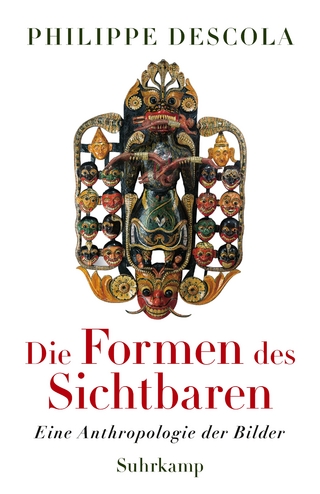
Cannibalizing the Canon
Brill (Verlag)
978-90-04-52673-0 (ISBN)
This rich, in-depth exploration of Dada’s roots in East-Central Europe is a vital addition to existing research on Dada and the avant-garde. Through deeply researched case studies and employing novel theoretical approaches, the volume rewrites the history of Dada as a story of cultural and political hybridity, border-crossings, transitions, and transgressions, across political, class and gender lines. Dismantling prevailing notions of Dada as a “Western” movement, the contributors to this volume present East-Central Europe as the locus of Dada activity and techniques. The articles explore how artists from the region pre-figured Dada as well as actively “cannibalized”, that is, reabsorbed and further hybridized, a range of avant-garde techniques, thus challenging “Western” cultural hegemony.
Oliver Botar is a Professor of Art History and Associate Director of the School of Art at the University of Manitoba. His research focuses on early 20th-century Central European Modernism, particularly the work of Moholy-Nagy, with concentrations on art in alternative media, and “Biocentrism” and Modernism in early-to-mid 20th-century art. Irina Denischenko is an Assistant Professor at Georgetown University. Her research focuses on 20th-century literature and visual art--especially the avant-garde, on critical theory, as well as on women’s contributions to avant-garde and modernist aesthetics in Central and Eastern Europe. Gábor Dobó is a research fellow at the Kassák Museum in Budapest. He is the principal investigator of a project focusing on the artist couple Lajos Kassák and Jolán Simon. In 2022, he was a Fulbright visiting scholar at Columbia University. Merse Pál Szeredi is department head at the Kassák Museum. His research focuses on Hungarian avant-garde art and the history of Lajos Kassák’s magazine Ma in Vienna between 1920 and 1925, with special emphasis on its international networks.
List of Illustrations
Notes on Contributors
Introduction: “Dada Is more than Dada”
Oliver A. I. Botar, Irina Denischenko, Gábor Dobó and Merse Pál Szeredi
Part 1:Topographies
1 An Exchange Point in a Network: Prague and Dada, 1918–1922
Jindrich Toman
2 Becoming Avant-Garde: Romanian Appropriations of Dada Techniques through East-Central European Networking
Emanuel Modoc
3 Polish Responses to Dadaism: The Voices on Dada, Contacts and Interpretations
Przemyslaw Strozek
4 The Dada Entr’acte of Dragan Aleksic
Jasna Jovanov
5 Hungarian Dada: the Missing Link
András Kappanyos
Part 2: In/Exclusions
6 Céline Arnauld, the “Nomadic” Avant-Garde Writer: a Transnational Approach to Her Life and Work
Iulia Dondorici
7 Two Mysterious “Mademoiselles”: Jeanne Rigaud and Maria Cantarelli
A Multilingual Multi-Layered Dada Pun Unravelled?
Hubert van den Berg
8 Dada as an Avant-Garde Movement and as Invective
Károly Kókai
9 “Dada Is the Best Paying Concern of the Day”: Consumer Culture, Performativity, and the Avant-Garde in Romania
Alexandra Chiriac
Part 3: Performativities
10 Marcel Breuer and Dada Performance: Remade Readymade Self and Furniture
Edit Tóth
11 Míra Holzbachová: Embodying the Avant-Garde
Meghan Forbes
12 To Write with Dots or Not to Write at All? Dada Ideas in Polish Interwar Literature
Michalina Kmiecik
13 Green Donkey Theatre: a Case Study on Theatrical Innovations in the Name of Dadaism
Sára Bagdi and Judit Galácz
Part 4: Trans(pos)itions
14 The Genesis of Dada: Futurist Influences in Germany, Romania and at the Cabaret Voltaire
Günter Berghaus
15 Revolt and Authority: From Kassák to Erdély
Dada in the Hungarian Avant-Garde and Neo-Avant-Garde
Éva Forgács
16 Dadá, not Dáda: Moholy-Nagy in Berlin, 1920–1921
Oliver A. I. Botar
17 Words, Sounds, Images, Theories: the Authors of the Magazine IS in the Context of Dadaism
Imre József Balázs
18 Self-Positioning in the International Avant-Garde: Kassák’s Strategic Use of Dada and Constructivism in the Book of New Artists
Krisztina Zsófia Csaba
Part 5: Hybridentities
19 Raoul Hausmann and the Welteislehre: Science and Identity
Arndt Niebisch
20 Dada Lingua Franca: The Linguistic Fate of Tristan Tzara and Raoul Hausmann
Alexandru Bar and Michael White
21 Crossovers and Transgressions: Dada as a Life Strategy in Emil Szittya’s Works
Magdolna Gucsa
22 Android, Cyborg, Dandy and Woman
Representations of the Body in the Decadent and Dada Imaginations: The Hungarian and International Contexts
Györgyi Földes
23 The New Man, According to Sándor Bortnyik
Merse Pál Szeredi
Index
| Erscheinungsdatum | 28.12.2023 |
|---|---|
| Reihe/Serie | Avant-Garde Critical Studies ; 42 |
| Verlagsort | Leiden |
| Sprache | englisch |
| Maße | 155 x 235 mm |
| Gewicht | 1226 g |
| Themenwelt | Kunst / Musik / Theater ► Allgemeines / Lexika |
| Kunst / Musik / Theater ► Kunstgeschichte / Kunststile | |
| ISBN-10 | 90-04-52673-0 / 9004526730 |
| ISBN-13 | 978-90-04-52673-0 / 9789004526730 |
| Zustand | Neuware |
| Informationen gemäß Produktsicherheitsverordnung (GPSR) | |
| Haben Sie eine Frage zum Produkt? |
aus dem Bereich


